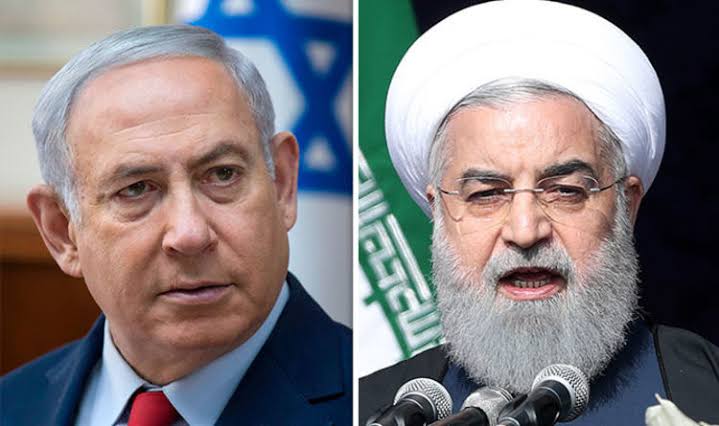
Fractured Peace: Exploring the Israel-Iran Conflict and Its Global Ramifications
The recent barrage of missiles and drones over Israel marks a significant escalation in the deep-rooted conflict between Israel and Iran. This latest confrontation raises urgent questions about the roles and motivations of global allies. Are these powers perpetuating the conflict under the guise of peace? This analysis delves into the historical origins of the crisis , ongoing impacts, and potential future of this complex geopolitical crisis, shedding light on the broader implications for global stability.
Genesis of Conflict
The roots of the Israel-Iran conflict reach back to the seismic shift caused by the Iranian Revolution of 1979. Before this, Israel and Iran under the Shah shared a pragmatic partnership that was based on mutual strategic interests. The two nations collaborated in military, economic, and intelligence sectors, primarily aimed at countering common regional threats, particularly Arab nationalism and the Soviet Union’s influence.
“In the context of the Israel-Iran conflict, the Shah refers specifically to Mohammad Reza Shah Pahlavi, who was the shah of Iran from 1941 to 1979. He was the eldest son of Reza Shah Pahlavi, the ruler and founder of the Pahlavi dynasty. Mohammad Reza Shah maintained a pro-Western foreign policy and focused on economic development in Iran. However, his rule was marked by increasing authoritarianism and opposition from various groups within Iran. The Shah’s overthrow in the Iranian Revolution of 1979 led to the establishment of the Islamic Republic of Iran under Ayatollah Khomeini.”
Israel provided Iran with military support and technological advancements, while Iran supplied Israel with oil and acted as a Muslim ally in a predominantly hostile Middle East. This relationship was facilitated by the then-common enemy in the form of pan-Arabist movements that both states viewed as a direct threat to their national securities.
However, with the overthrow of the Shah and the establishment of the Islamic Republic under Ayatollah Khomeini, Iran’s foreign policy underwent a dramatic transformation. The new regime espoused a revolutionary ideology that was not only anti-Western but also anti-Zionist, framing Israel as a key adversary in the Islamic world. Iran’s policy pivoted from tacit cooperation with Israel to active opposition, reflected in its immediate cessation of oil exports to Israel and the expulsion of Israeli missions from Tehran.
Iran then began to openly support Palestinian liberation movements and other armed groups opposed to Israeli interests, marking a significant shift in regional alliances. This support has manifested in the backing of Hezbollah in Lebanon and other militant factions in the Gaza Strip and the West Bank, fundamentally altering the security landscape around Israel. This strategic sponsorship has not only fueled direct confrontations but has also entrenched Iran as a long-term antagonist in Israeli defense strategy.
Moreover, the rhetoric employed by the post-revolutionary Iranian leadership, which often included calls for the destruction of the Israeli state, further entrenched the animosity between the two nations. These statements, coupled with Iran’s pursuit of nuclear capabilities, have been perceived by Israel as existential threats, prompting it to take aggressive countermeasures, including covert operations and public alliances with other Sunni Arab states equally wary of Iran’s regional ambitions.
The Israel-Iran standoff exemplifies the complexities of international diplomacy and the challenges of achieving lasting peace in a region marred by historical grievances and strategic rivalries.
Thus, the genesis of this conflict is deeply intertwined with the broader geopolitical shifts in the Middle East post-1979, characterized by ideological extremes and the strategic realignment of regional powers. This foundational hostility has been perpetuated and exacerbated by subsequent actions on both sides, setting the stage for decades of strife that continue to shape their bilateral relations today.
Human and Economic Toll
The ongoing conflict between Israel and Iran has severe repercussions for civilians, including death, displacement, and psychological trauma. Economically, it leads to significant defense spending at the expense of public services. For example, Israel’s investment in its Iron Dome missile defense system, costing about $3 billion, underscores the financial burden of constant military readiness. In Iran, re-imposed US sanctions since 2018 have devastated the economy, leading to high inflation and limited global trade opportunities, which in turn reinforces the government’s focus on military strategies over economic development.
International Response and Prevention Efforts
The effectiveness of the United Nations in mediating peace is often limited by the conflicting interests of Security Council members. For instance, actions like the US veto of a UN resolution critical of its stance on Jerusalem demonstrate how national interests can override collective decision-making. These challenges are compounded by the non-binding nature of General Assembly resolutions and the absence of enforcement mechanisms, which diminish the UN’s capacity to influence peace between Israel and Iran.
The United States’ backing of Israel is influenced by shared democratic values, historical support, strategic interests, regional stability concerns, and shared security challenges. The US-Israel alliance has evolved over time and is based on a multifaceted relationship.
China and Russia’s support for Iran is driven by their own geopolitical considerations. China and Russia see Iran as a potential partner to counter US influence in the Middle East and to advance their own economic and strategic interests. Economic ties, arms sales, and opposition to US dominance also contribute to their backing of Iran.
The effectiveness of the United Nations in mediating peace is often limited by the conflicting interests of Security Council members.
Misuse of Drone Technology
Both Israel and Iran exploit drone technology for strategic military advantages, such as targeted assassinations and surveillance operations. This capability raises ethical concerns regarding collateral damage and the legality of such actions under international law. The rapid advancement and deployment of drones challenge existing regulatory frameworks, calling for an urgent need to adapt international laws to manage these new technologies responsibly.
The use of drone technology provides countries with significant military advantages, including enhanced surveillance capabilities and the ability to conduct targeted operations. However, not all countries possess the same level of drone technology or the resources to develop such capabilities. This raises questions about fairness and reliance on allies for security.
Relying on allies for security is a common practice among nations, especially when it comes to complex and expensive military technologies. Countries may form alliances to share resources, intelligence, and military capabilities in order to enhance their collective security. However, this reliance on allies can also create dependencies and potentially limit a country’s independence and decision-making in certain situations.
It is challenging for all countries to protect themselves to the same degree due to varying levels of resources, technological capabilities, and geopolitical circumstances. Some countries may have limited capacity to develop advanced defense technologies or lack the financial means to invest in such systems. Consequently, they may rely more heavily on alliances and partnerships for their security.
Efforts to regulate the use of drone technology, adapt international laws, and establish ethical guidelines are crucial to ensure responsible and accountable use of this technology. This includes addressing concerns over collateral damage, privacy, and adherence to international humanitarian law. The rapid advancement of drones highlights the need for international cooperation to establish comprehensive frameworks that govern their use and mitigate potential risks to global security.
Risks of Artificial Intelligence in Warfare
The adoption of AI in military contexts introduces risks of rapid escalation due to the ability of AI systems to operate beyond human reaction times. This can lead to unanticipated military conflicts, heightening global security risks. Moreover, the disparity in AI capabilities between nations could trigger a technological arms race. Ethical debates continue over the delegation of critical combat decisions to AI, challenging traditional norms and laws of warfare.
Final Remarks
The Israel-Iran standoff exemplifies the complexities of international diplomacy and the challenges of achieving lasting peace in a region marred by historical grievances and strategic rivalries. It underscores the necessity for a multifaceted approach to peace-building that involves not only direct negotiations but also a comprehensive understanding of the underlying factors perpetuating conflict. Global actors must prioritize human security and collaborative efforts over geopolitical strategies to foster a more stable and peaceful international landscape.
Aric Jabari is a Sixteenth Council Fellow based in South Africa



